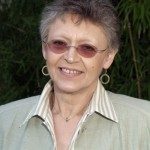Link to Pubmed [PMID] – 6096717
Nature 1984 Dec 20-1985 Jan 2;312(5996):757-60
Lymphadenopathy-associated virus (LAV) is a human retrovirus first isolated from a homosexual patient with lymphadenopathy syndrome, frequently a prodrome or a benign form of acquired immune deficiency syndrome (AIDS). Other LAV isolates have subsequently been recovered from patients with AIDS or pre-AIDS and all available data are consistent with the virus being the causative agent of AIDS. The virus is propagated on activated T lymphocytes and has a tropism for the T-cell subset OKT4 (ref. 6), in which it induces a cytopathic effect. The major core protein of LAV is antigenically unrelated to other known retroviral antigens. LAV-like viruses have more recently been independently isolated from patients with AIDS and pre-AIDS. These viruses, called human T-cell leukaemia/lymphoma virus type III (HTLV-III) and AIDS-associated retrovirus (ARV), seem to have many characteristics in common with LAV and probably represent independent isolates of the LAV prototype. We have sought to characterize LAV by the molecular cloning of its genome. A cloned LAV complementary DNA was used to screen a library of recombinant phages constructed from the genomic DNA of LAV-infected T lymphocytes. Two families of clones were characterized which differ in a restriction site. The viral genome is longer than any other human retroviral genome (9.1-9.2 kilobases).
